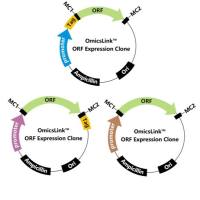Production of Haploid and Diploid Androgenetic Zebrafish
互联网
407
Zebrafish (Danio rerio ) are a popular vertebrate model system, particularly useful for research in developmental genetics and neurobiology. The adults are easy to obtain and rear; the generation times are only a few months; and large clutches of big embryos are produced (100–1000 per mating). The embryos develop externally and are nearly transparent, facilitating microscopy, experimental manipulations, and screening for morphological mutants. High-density genetic linkage maps have been produced for visible and DNA markers, and the genome is being sequenced. Several useful genetic tools have been developed. Large-scale mutagenesis screens have detected genes involved in morphogenesis and other developmental processes (1 ,2 ). These screens involved a classical three-generation crossing strategy to detect recessive lethal mutations revealed in homozygous diploid mutants. Similar screens are done using insertional mutagenesis to facilitate cloning of the disrupted genes (3 ). Many useful molecular markers of differentiating cells have been characterized, and gene expression can be effectively manipulated by the use of morpholino antisense oligonucleotides or expression of dominant-negative mutant proteins. Much information concerning zebrafish mutants, strains, and methods can be found at http://www.zfin.org .








